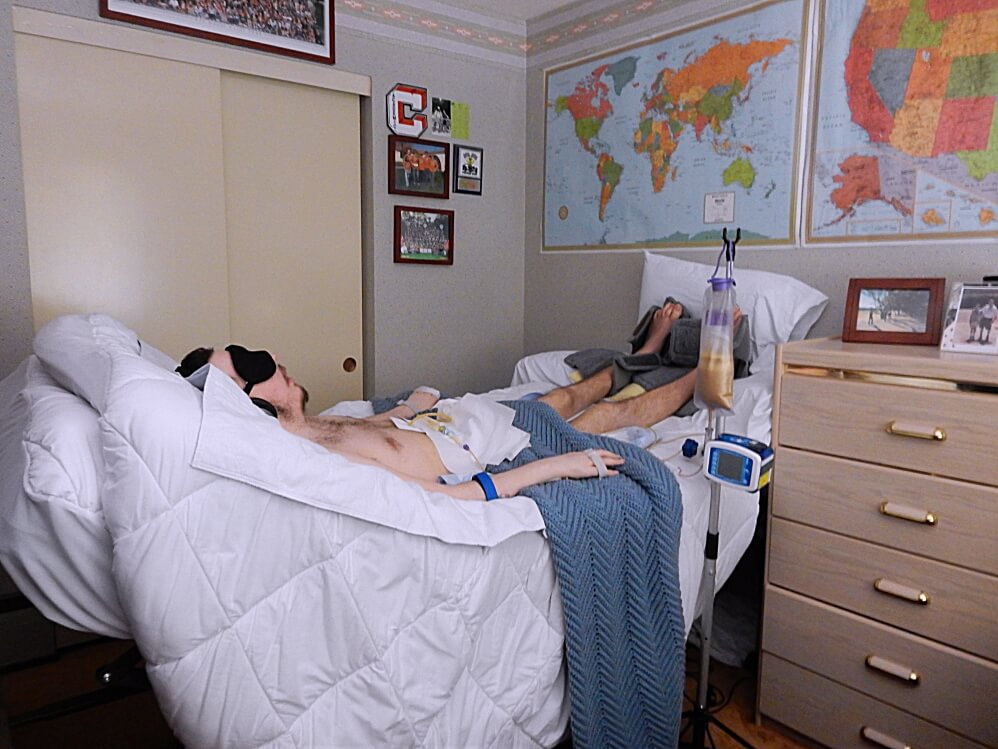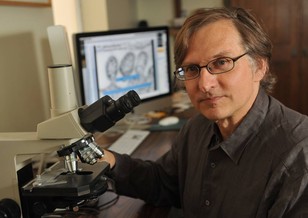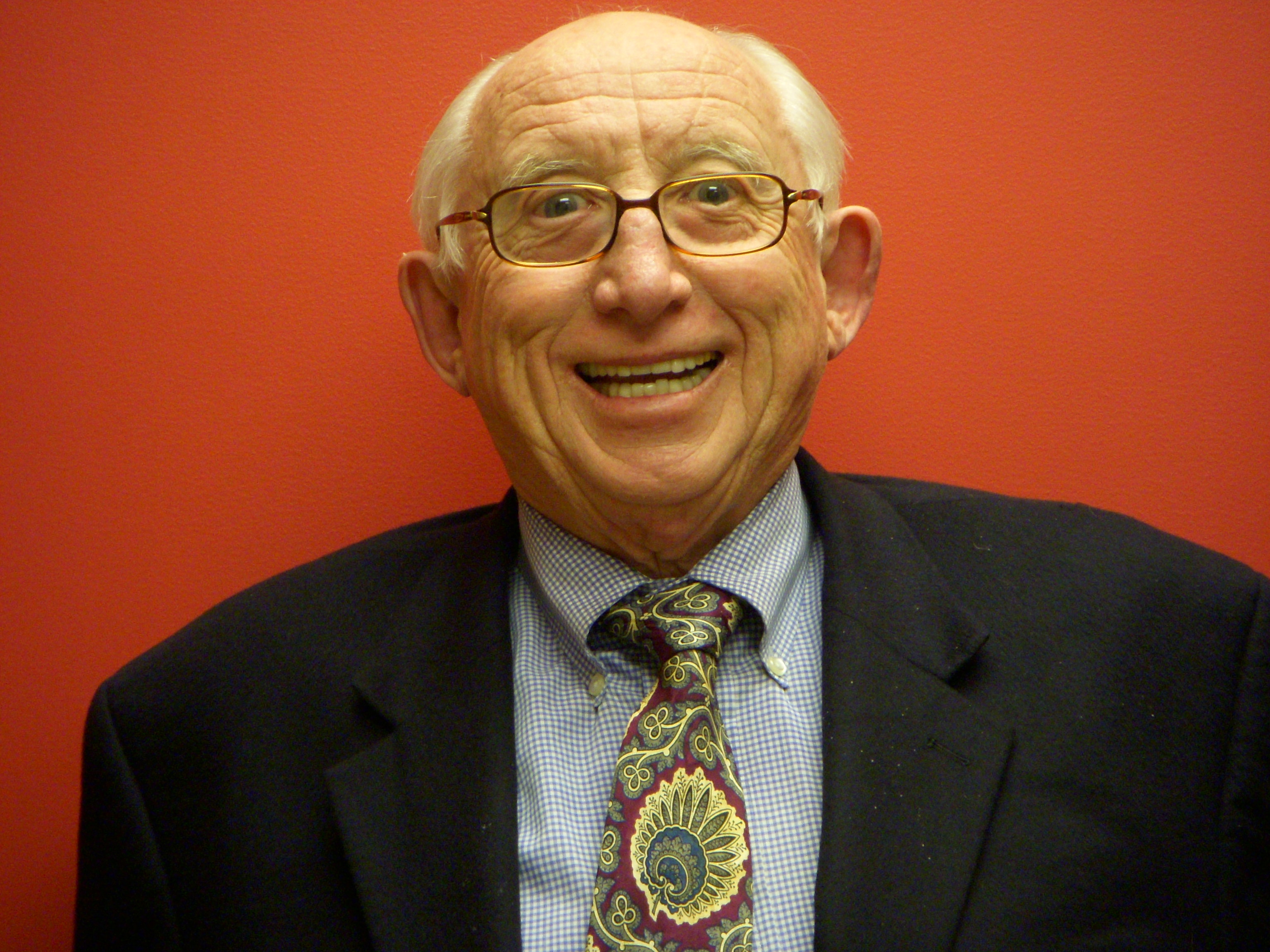Photo: Tom Camenzind, an ME/CFS patient, photographed at his home in San Ramon, Calif. / Credit: Linda Gasparello
All diseases are cruel, but some have a refined brutality all their own. One such is Myalgic Encephalomyelitis (ME), also known as Chronic Fatigue Syndrome (CFS). It is a monster, often hidden in plain sight; the suffering it inflicts is limitless.
Tom Camenzind is a handsome young man who should be in the joyous throes of youth. A popular and gifted student at Stanford University, Tom was clearing the hurdles of academia with ease and grace. In January of his sophomore year, he caught a cold on campus. ME walked through some door, and stole his promising life.
Today Tom lies conscious but prone in his parents’ home in San Ramon, Calif. He is totally paralyzed and can only communicate with his parents, Mark and Dorothy, by pressure from his fingers on sensors. He cannot tolerate everyday sounds, light or touch.
When the sensor-activated bell sounds, Tom’s parents come rushing to his side. Mark is an engineer and Dorothy is a physician, and the strain of their son’s affliction on them is palpable. Tom cannot do anything, anything whatsoever, for himself. At 23 years old, he is on the threshold of life, but he cannot cross it. He breathes and thinks, but he cannot live his life.
Recently, I filmed the Camenzinds for a special edition of “White House Chronicle,” a weekly program that I produce and host for PBS and other broadcast outlets. It was made in conjunction with the Solve ME/CFS Initiative, a Los Angeles-based charity.
Tom’s agony, and that of 1 million in America and 17 million around the world, predominantly women, cries out in terrible, silent eloquence for a national research effort with international cooperation on ME/CFS – so that those who suffer, like Tom, can dare to hope.
Tom’s paralysis is extreme, but others suffer daily with extreme fatigue, headaches, muscle pain, dysphasia and light and sound intolerance. Normal work is impossible, as is maintaining ordinary family life. Precious few ME/CFS patients make a full recovery. My files contain letters from sufferers who beg for death. Suicide is common.
Yet the United States has never put the effort — read dollars — into ME/CFS that it deserves, that it needs, that one would expect. Previous administrations have spent a paltry $5 million a year on research on the disease. While that amount was due to rise to $15 million, there is no guarantee it will under the Trump administration. The Office of Management and Budget has proposed deep cuts in funding for the National Institutes of Health, the research agency.
Even the diagnosis of the disease is a challenge. There are no conventional biomarkers that can be found in body fluids. One certain but clumsy way of diagnosing it is by asking patients who are ambulatory to walk on a treadmill. If they collapse for one or more days, the diagnosis is positive.
Many suffer for years and cannot find a doctor who knows anything about the disease. The disease is not part of the curriculum in medical schools.
Most patients see many doctors and get many wrong diagnoses before they find a specialist – if they find one at all. Most states have no specialists.
For patients, costs are huge and help is slight. Lovers drift away, spouses give up, children are often thought to be lazy and are criticized by parents, siblings and teachers. Schools are baffled when active kids fall apart from ME.
Over the years, there have been efforts by private charities, like the Solve ME/CFS Initiative, to fund the research gap. But still missing is the government, the big foundations and Big Pharma.
Sadly, ME has no celebrity champions. AIDS had Elizabeth Taylor, Muscular Dystrophy has Jerry Lewis and Parkinson’s Disease has Michael J. Fox.
For Tom to come back to his life one day, money and research are needed now. Oh, so needed.
Llewellyn King is executive producer and host of “White House Chronicle” on PBS. His e-mail is llewellynking1@gmail.com.







